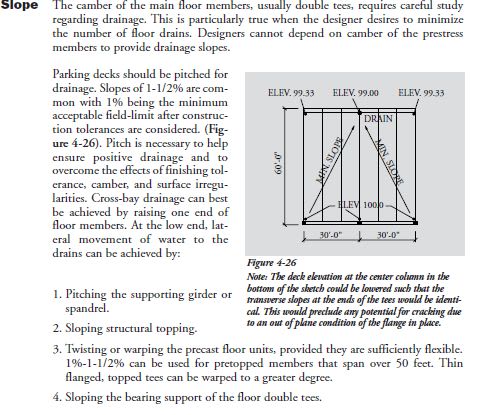Prestressed Guy
Structural
- May 11, 2007
- 390
It is typical to get drainage in parking structures by having the bearing around the exterior of the structure level and then dropping one end of an interior beam to create a warped deck. This creates torsional twist in the member but given the slenderness of flange and each of the two stems, they do not have a great deal of tortional stiffness.
I have done a lot of structures with 1" across a 10' tee which puts the bearing 1/2" differential slope.
I am working with an architect that wants 2.75" on a 10' tee which is considerably farther than I have done in past projects. Does anyone have experience or rules of thumb as to how far you can twist a prestressed double tee before you start running into problems?
To be more specific, on a 24" x 10" DT x 47' long, would you be comfortable with both stems bearing at the same elevation on one end and one stem being 1.375" lower elevation at the other?
I have done a lot of structures with 1" across a 10' tee which puts the bearing 1/2" differential slope.
I am working with an architect that wants 2.75" on a 10' tee which is considerably farther than I have done in past projects. Does anyone have experience or rules of thumb as to how far you can twist a prestressed double tee before you start running into problems?
To be more specific, on a 24" x 10" DT x 47' long, would you be comfortable with both stems bearing at the same elevation on one end and one stem being 1.375" lower elevation at the other?


